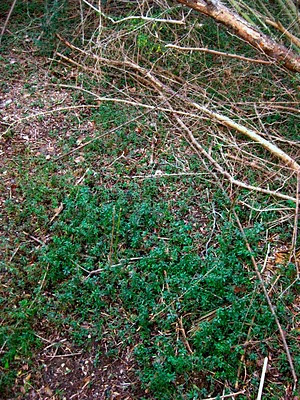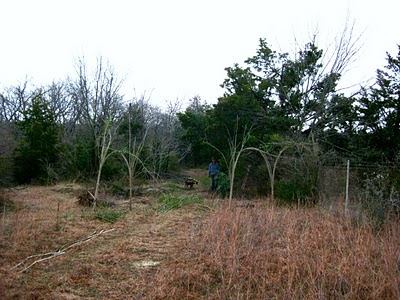
The structure and seed zones of privet
Privet growing in the wild sends out branches from a central root ball. It has corresponding small branches that sprout along the main branch. As the main branch grows longer it bends, making an arch. The small branches on the top of the arch grow towards the sun light while the branches on the underside dry up and snap off, leaving rows of small stubs. These stubs are reinforced over the seasons to form a thorn like defense. This pattern of the branch arching, growing and branching out repeats every season resulting in the main branch becoming a series of arches that can extend over 10 feet in length (as observed at La Reunion TX).
With each season, new branches sprout from the root ball and grow straight up, using the older branches as support. Once they have cleared the leafy privet canapé, the small side branches begin. The seeds and new leaves will only form on new growth. The long clusters of hard round seeds tend to be located on the farthest tips of the branches where they can be seen by animals and whipped about in the wind.
Cutting a branch usually results in a growth spurt around the stump and along the branch. Cutting a branch at the base of the plant tends to multiple the amount of new branches sprouting up from the root ball.

New sprouting seeds
Cutting all the branches down to the base allows sun light to reach the unsprouted seeds, this combined with a little rain water will activate all the seeds.
 Despite the cold and rain, things are progressing. 4 1/2 of the 7 arches are in place. They need to be tweaked and fattened up a bit. I am also adding some side arches at the gate opening for stability.
Despite the cold and rain, things are progressing. 4 1/2 of the 7 arches are in place. They need to be tweaked and fattened up a bit. I am also adding some side arches at the gate opening for stability.






